小儿术后谵妄与躁动到底怎么办呢?-天天观速讯
儿童从麻醉中清醒或苏醒时,会发生谵妄和躁动。苏醒期谵妄(emergence delirium, ED)可能使患儿、父母和照料者感到痛苦,并可导致无意中移除静脉导管、引流管和敷料,偶尔还会伤到自己。
下面就从以下几个方面讨论儿童ED和躁动的定义、危险因素、预防和治疗。希望对这些知识点的梳理,使大家不再对儿童苏醒期的谵妄或躁动产生恐惧,可以更加从容不迫地面对这些问题,从根本上来处理相关并发症。
定义
 (相关资料图)
(相关资料图)
ED是一种意识状态改变,始于麻醉苏醒,且持续到恢复期早期。ED是儿童对周围环境的意识或注意力紊乱,表现为麻醉苏醒后的定向障碍、多动和过度敏感[1]。苏醒期躁动(emergence agitation, EA)是概括性术语,包括ED、疼痛和其他一些因素[2]。
危险因素
年龄 —使用不同诊断工具的研究表明,学龄前儿童(即2-6岁)比年龄较大儿童更易发生ED,许多研究报告的发生率为30%-50%[3-5]
麻醉剂 —与静脉麻醉剂相比,强效吸入麻醉剂更可能引起ED,包括七氟烷、异氟烷、地氟烷和氟烷。一篇meta分析纳入14项随机试验,共1100例接受全身麻醉的儿童,结果显示,与七氟烷相比,丙泊酚麻醉后发生ED的可能性更小[6]。另一篇meta分析纳入非随机和随机研究(158项研究,14,000多例儿童),结果也提示,与七氟烷相比,丙泊酚麻醉后发生ED的可能性更小[7]。
手术类型 —预防或充分控制疼痛时,手术类型可能不影响发生ED的风险。一些研究提示,特定手术与ED有关,如扁桃体切除术、无椎管内镇痛的泌尿外科手术以及斜视手术,但这些研究可能将术后疼痛相关行为与ED合并在一起。
麻醉持续时间和深度 —深度麻醉,即脑电双频指数(bispectral index, BIS)
术前行为 —术前精神状态与ED之间的关系尚不清楚,研究结果不一致。一项回顾性研究纳入约800例麻醉儿童,结果显示,根据三级谵妄量表,术前焦虑水平与ED发生几率有关[9]。
预防
预防ED最有效的措施是,全身麻醉用全凭静脉麻醉(total intravenous anesthesia, TIVA)代替强效吸入麻醉剂(即七氟烷、地氟烷和异氟烷)。
由于ED发生率较低,实践中我们不会常规用药预防ED。在ED发生率较高的中心,必要时可在围术期使用多种药物预防七氟烷麻醉相关ED,包括丙泊酚、咪达唑仑、阿片类药物、氯胺酮和α2受体激动剂。
●丙泊酚–在无痛操作或术中镇痛的操作中,临近七氟烷麻醉结束时,可给予丙泊酚预防ED。
●咪达唑仑的给药时机和途径可能是影响ED的重要决定因素。术前直肠给予咪达唑仑不能降低ED发生率[10],而手术结束时静脉给予咪达唑仑可能有效,一般是手术结束前静脉给予0.03mg/kg咪达唑仑。
●阿片类药物–芬太尼0.5-1μg/kg静脉给药或瑞芬太尼0.05-0.15μg/(kg·min)可预防ED。手术快结束时经静脉给予芬太尼可降低ED发生率,但为避免延长患者在麻醉后苏醒室的停留时间,并避免增加术后恶心和呕吐发生率,应至少在手术结束前10-20分钟给予芬太尼[11]。
●α2受体激动剂–可乐定(2μg/kg)或右美托咪定(0.3-1μg/kg)静脉给药可降低ED发生率,但也可延后出院时间[12-15]。
●氯胺酮 –氯胺酮能降低儿童七氟烷麻醉后ED发生率[16];可在术中静脉给予1mg/kg,之后以1mg/(kg·h)的速度输注;或者在手术即将结束时静脉给予单剂0.25mg/kg[17]。
●对于在恢复室出现躁动的儿童,应首先评估有无疼痛和潜在危险的躁动原因,即缺氧、低血压、高碳酸血症和低血糖,并立即对诱发因素予以适当处理。
治疗
除了支持和预防伤害外,许多ED儿童不需要治疗。约95%的ED儿童在发病后20分钟内自行消失,无持续后遗症。
对于在恢复室出现躁动的儿童,应首先评估有无疼痛和潜在危险的躁动原因(即缺氧、低血压、高碳酸血症和低血糖),如果疼痛是诱因,适当采用镇痛药。
如果需要治疗,可使用镇静剂和阿片类药物。尚无对比这种情况下各种治疗的研究。一项针对加拿大麻醉科医师的调查显示,最常用于终止儿童ED的干预措施是丙泊酚(42%)、咪达唑仑(31%)、芬太尼(10%)、吗啡(7%)和右美托咪定(5%)[18]。一旦ED发作缓解,无论是自发消退还是通过干预,ED复发都未见报道。
(照片拍摄者:黄蕾蕾医生)
作者:张子银 广州中医药大学第一附属医院
参考文献
1.Malarbi S, Stargatt R, Howard K, Davidson A. Characterizing the behavior of children emerging with delirium from general anesthesia. Paediatr Anaesth 2011; 21:942.
2.Sikich N, Lerman J. Development and psychometric evaluation of the pediatric anesthesia emergence delirium scale. Anesthesiology 2004; 100:1138.
3.Aono J, Ueda W, Mamiya K, et al. Greater incidence of delirium during recovery from sevoflurane anesthesia in preschool boys. Anesthesiology 1997; 87:1298.
4.Uezono S, Goto T, Terui K, et al. Emergence agitation after sevoflurane versus propofol in pediatric patients. Anesth Analg 2000; 91:563.
5.Beskow A, Westrin P. Sevoflurane causes more postoperative agitation in children than does halothane. Acta Anaesthesiol Scand 1999; 43:536.
6.Kanaya A, Kuratani N, Satoh D, Kurosawa S. Lower incidence of emergence agitation in children after propofol anesthesia compared with sevoflurane: a meta-analysis of randomized controlled trials. J Anesth 2014; 28:4.
7.Costi D, Cyna AM, Ahmed S, et al. Effects of sevoflurane versus other general anaesthesia on emergence agitation in children. Cochrane Database Syst Rev 2014; :CD007084.
8.Faulk DJ, Twite MD, Zuk J, et al. Hypnotic depth and the incidence of emergence agitation and negative postoperative behavioral changes. Paediatr Anaesth 2010; 20:72.
9.Kain ZN, Caldwell-Andrews AA, Maranets I, et al. Preoperative anxiety and emergence delirium and postoperative maladaptive behaviors. Anesth Analg 2004; 99:1648.
10.Breschan C, Platzer M, Jost R, et al. Midazolam does not reduce emergence delirium after sevoflurane anesthesia in children. Paediatr Anaesth 2007; 17:347.
11.Kim N, Park JH, Lee JS, et al. Effects of intravenous fentanyl around the end of surgery on emergence agitation in children: Systematic review and meta-analysis. Paediatr Anaesth 2017; 27:885.
12.Makkar JK, Bhatia N, Bala I, et al. A comparison of single dose dexmedetomidine with propofol for the prevention of emergence delirium after desflurane anaesthesia in children. Anaesthesia 2016; 71:50.
13.Zhu M, Wang H, Zhu A, et al. Meta-analysis of dexmedetomidine on emergence agitation and recovery profiles in children after sevoflurane anesthesia: different administration and different dosage. PLoS One 2015; 10:e0123728.
14.Zhang C, Li J, Zhao D, Wang Y. Prophylactic midazolam and clonidine for emergence from agitation in children after emergence from sevoflurane anesthesia: a meta-analysis. Clin Ther 2013; 35:1622.
15.Shi M, Miao S, Gu T, et al. Dexmedetomidine for the prevention of emergence delirium and postoperative behavioral changes in pediatric patients with sevoflurane anesthesia: a double-blind, randomized trial. Drug Des Devel Ther 2019; 13:897.
16.Chen JY, Jia JE, Liu TJ, et al. Comparison of the effects of dexmedetomidine, ketamine, and placebo on emergence agitation after strabismus surgery in children. Can J Anaesth 2013; 60:385.
17.Dalens BJ, Pinard AM, Létourneau DR, et al. Prevention of emergence agitation after sevoflurane anesthesia for pediatric cerebral magnetic resonance imaging by small doses of ketamine or nalbuphine administered just before discontinuing anesthesia. Anesth Analg 2006; 102:1056.
18.Rosen HD, Mervitz D, Cravero JP. Pediatric emergence delirium: Canadian Pediatric Anesthesiologists" experience. Paediatr Anaesth 2016; 26:207.
【温馨提示】点个关注,这里有大量专业的医学科普,为您揭秘手术麻醉的那些事儿~




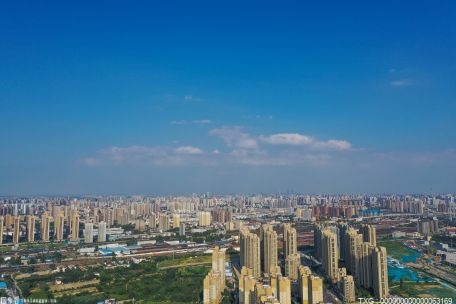
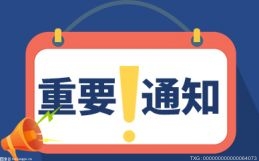
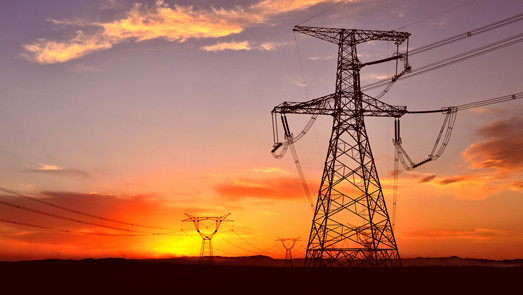


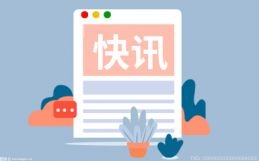
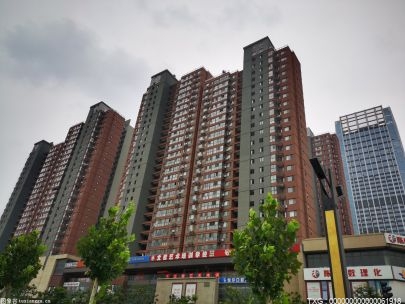



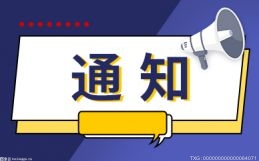
 营业执照公示信息
营业执照公示信息